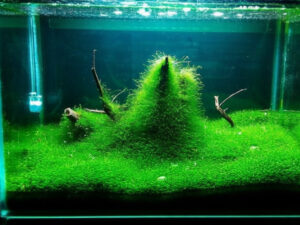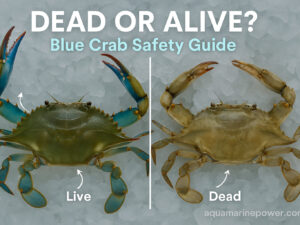Timing is everything in crabbing. Check your standard crab traps every 6-36 hours, with 12-24 hours being the sweet spot for most situations. Ring traps and collapsible traps need more frequent attention, typically every 30 minutes to 2 hours.
Whether you're after blue crabs in the Chesapeake or Dungeness on the West Coast, knowing when to check crab catches can mean the difference between a full bushel and an empty trap. Poor timing leads to escaped crabs, depleted bait, or worse - crab mortality from heat stress or cannibalism.
This comprehensive guide covers optimal checking schedules for every trap type, tidal timing strategies, regional considerations, and expert techniques to maximize your catch. You'll learn exactly how often to check crab traps based on conditions, species, and location.
How Often to Check Crab Traps?
The frequency of checking your traps depends primarily on the trap type you're using. Each design has different retention capabilities and requires specific timing strategies for optimal results.
Standard Crab Pots: 6-36 Hours
Traditional wire mesh crab pots offer the most flexibility in checking schedules. The sweet spot is 12-24 hours, giving crabs ample time to find your bait while ensuring they don't escape or run out of food.
These traps can safely hold crabs for up to 36 hours in cooler conditions. However, pushing beyond this timeframe risks crab mortality, especially during summer months when water temperatures soar.
Ring Traps and Collapsible Traps: 30 Minutes-2 Hours
Ring traps require vigilant monitoring due to their open-top design. Crabs can easily escape if given too much time, making frequent checks essential for success.
Start checking after 30 minutes and don't exceed 2 hours between pulls. This frequent schedule might seem demanding, but it's necessary for these trap styles.
Commercial Traps: Daily Checking Standard
Professional crabbers typically run their trap lines daily. This routine maximizes catch while maintaining crab quality and complying with most commercial regulations.
| Trap Type | Minimum Soak | Optimal Time | Maximum Safe Time |
|---|---|---|---|
| Standard Pots | 2 hours | 12-24 hours | 36-48 hours |
| Ring Traps | 30 minutes | 1-2 hours | 2-3 hours |
| Collapsible | 30 minutes | 1-2 hours | 3-4 hours |
| Commercial | 12 hours | 24 hours | 48 hours |
Understanding why timing matters helps you make better decisions on the water. Crabs can escape through the same entrances they use to enter, especially once bait is depleted.
Best Time to Check Crab Traps by Trap Type
Different trap designs require unique timing strategies. Understanding these differences ensures you're not leaving money (or dinner) on the bottom of the bay.
When to Check Traditional Crab Pots?
Traditional crab pots offer the most forgiving timeline for checking. Their enclosed design and one-way entrances keep crabs secure longer than other trap types.
The ideal window falls between 12-24 hours. This timeframe allows crabs to discover your trap during their natural feeding cycles while maintaining fresh, attractive bait. Many experienced crabbers swear by the 24-hour mark as their standard checking interval.
Waiting beyond 36 hours introduces several risks. Bait deteriorates, losing its attractive scent. Trapped crabs may begin cannibalizing each other, especially if you've caught a good number. In extreme cases, crabs can find their way back out through the entrance funnels.
During hot weather, consider checking more frequently. Water temperatures above 95°F can be lethal to trapped crabs, particularly in shallow areas where traps may be partially exposed during low tide.
Ring Trap and Hoop Net Timing
Ring traps operate on an entirely different principle than enclosed pots. Their open-top design means crabs can escape as easily as they enter, demanding constant attention.
The 30-minute minimum soak allows crabs time to discover and commit to your bait. However, once they've consumed the easy pickings, nothing prevents their departure. This is why how often to check traps becomes critical with this gear.
Most successful ring trap users check every 45-90 minutes. This schedule balances giving crabs time to accumulate while preventing significant losses to escape. On productive days, you might see similar catches with 45-minute soaks as you would leaving them for 2 hours.
Collapsible Trap Schedules
Collapsible traps share similar timing requirements with ring traps but offer slightly better retention. Their pyramid or box design provides some escape deterrent, though not as effective as traditional pots.
Check these traps every 1-2 hours for optimal results. The marine life behavior patterns you're targeting influence the exact timing. Blue crabs tend to be more aggressive feeders and may clean out bait faster than other species.
When to Crabbing - Tidal Timing Strategies
Smart crabbers synchronize their trap checking with tidal movements. This natural rhythm dramatically impacts when to catch crabs most effectively.
Understanding Slack Tide for Crabbing
Slack tide represents the brief period when tidal current stops before reversing direction. This occurs four times daily - two high slack tides and two low slack tides.
Crabs are remarkably lazy creatures, preferring to ride tidal currents rather than swim actively. They position themselves to intercept food carried by moving water, making the period around slack tide prime feeding time.
During slack tide, crabs must move under their own power to find food. This increased activity makes them more likely to investigate your baited traps.
Best Time to Crab with Tides
Set your traps 1-2 hours before slack tide to maximize this natural feeding pattern. The increasing current helps disperse your bait scent downstream, creating an attractive trail leading directly to your trap.
Pull your traps 30-60 minutes after slack tide passes. This timing captures crabs that moved into your trap during peak activity while the returning current hasn't yet encouraged them to leave.
Consider these tidal strategies for different scenarios:
- Strong Current Areas: Set 2 hours before slack, pull immediately after
- Calm Backwaters: Set 1 hour before, pull 1 hour after
- Inlet Fishing: Focus entirely on slack periods
- Open Bay: Less critical but still beneficial
Blue Crab: How Often to Check Traps?
Blue crabs present unique considerations for trap timing. These aggressive feeders and escape artists require careful attention to maximize catch while ensuring survival.
Temperature plays a crucial role in blue crab how often to check traps. These crustaceans are particularly sensitive to high water temperatures, with mortality risk increasing dramatically above 90°F.
During summer months, check blue crab traps every 12-18 hours. This shortened timeline prevents heat stress while maintaining good catch rates. Early morning checks prove especially productive, as crabs feed actively during cooler nighttime hours.
Early Season vs Late Season Timing
Early season crabbing (April-May in most regions) allows for longer soak times. Water temperatures remain moderate, and crabs are less likely to experience stress. Feel confident leaving traps for the full 24-36 hour window.
Late season (September-November) returns to more forgiving schedules. Cooling water temperatures reduce mortality risk, though you'll need to balance this with decreased crab activity. Many crabbers find success with 18-24 hour soak times during fall months.
Peak summer season demands the most attention. Check traps twice daily if possible - once in early morning and again in late afternoon. This schedule maximizes catch while protecting your trapped crabs from heat stress.
Factors That Affect When to Check Crab Catches
Multiple environmental and practical factors influence optimal checking schedules. Understanding these variables helps you adapt to changing conditions.
Water Temperature Considerations
Temperature ranks as the most critical factor affecting when to check crab catches. Crabs are cold-blooded creatures whose metabolism directly relates to water temperature.
In water above 85°F, increase checking frequency to every 12 hours. Above 95°F, consider checking every 6-8 hours or temporarily stopping trap fishing until conditions improve. Shallow water locations face the highest risk during heat waves.
Conversely, cold water (below 50°F) slows crab metabolism significantly. You can extend soak times to 48 hours or more, though crab activity decreases proportionally. Many regions close crabbing seasons during coldest months for this reason.
Bait Type and Longevity
Your choice of bait directly impacts how long traps remain effective. Fresh, oily baits like menhaden or fish heads attract crabs quickly but deteriorate within 24 hours.
Consider this bait longevity guide:
- Fresh fish: 12-24 hours peak effectiveness
- Chicken necks/backs: 24-36 hours
- Frozen bait: 18-30 hours
- Commercial bait pellets: 48-72 hours
- Mixed fresh/dried bait: Up to 1 week
The mixed bait technique deserves special mention. Combining fresh attractant bait with dried "keeper" bait extends trap effectiveness for extended soaks. Place fresh bait in the center compartment with dried fish or chicken around the edges.
Location and Depth
Shallow water locations (under 5 feet) require more frequent checking, especially during summer. These areas experience greater temperature fluctuations and increased recreational boat traffic that can disturb traps.
Deep water sets (15+ feet) offer more stable conditions. Crabs in deeper water experience less stress, allowing for longer soak times. However, strong currents in channels may require earlier checking to prevent trap movement.
High-traffic areas near popular piers or boat launches need frequent attention. Besides the risk of trap theft, constant activity can spook crabs away from your gear. Check these locations every 12 hours maximum.
Common Mistakes When Checking Traps
Even experienced crabbers fall into timing traps that reduce their success. Avoiding these common errors improves both catch rates and crab survival.
Waiting too long remains the most frequent mistake. After 3 days, trapped crabs begin showing signs of starvation and stress. Cannibalism becomes common, leaving you with empty shells and claws instead of keeper crabs.
Checking too frequently creates the opposite problem. Pulling traps every 1-2 hours (except for ring traps) disturbs the area and prevents crabs from settling in to feed. Give standard traps at least 6 hours minimum soak time.
Ignoring weather forecasts leads to lost gear and dead crabs. Strong storms can bury traps in mud or push them into areas where crabs cannot survive. Check all traps before severe weather arrives.
Pro Tips for Maximizing Your Catch
Veteran crabbers employ several timing strategies to consistently fill their bushel baskets. These proven techniques focus on when to catch crabs most effectively.
The double-check method works exceptionally well during peak season. Run your trap line early morning, re-bait, then check again in late afternoon. This approach captures both nocturnal and diurnal feeding patterns.
For weekend warriors limited to single-day trips, try the "power hour" approach with ring traps. Set multiple traps in a concentrated area and rotate through them every 45 minutes. This intensive method can produce impressive results in just 4-5 hours.
Strategic trap placement reduces required checking frequency. Position traps along drop-offs, near structure, or in proven crab highways. Good locations produce faster, requiring less soak time than marginal spots.
Quick Tip: Mark your trap GPS coordinates. This simple step saves time during checks and helps identify your most productive locations for future trips.
When to Crabbing Season Considerations
Seasonal patterns dramatically influence when to crabbing and optimal checking schedules. Each region follows unique rhythms based on water temperature, crab biology, and local regulations.
Regional Season Variations
East Coast timing typically runs April through November, with peak activity June through September. Maryland's famous blue crab season sees heaviest pressure during summer months, requiring strategic timing to avoid crowds.
Gulf Coast timing offers year-round opportunities in many areas. However, best time to crab falls during spring (March-May) and fall (September-November) when temperatures moderate. Summer crabbing remains productive but requires careful attention to heat stress.
West Coast timing varies dramatically by latitude. Washington's Dungeness season opens in July for most of Puget Sound, while California seasons differ by region. Always verify current regulations before setting traps.
Early Season Strategies
Early season presents unique challenges and opportunities. Crabs emerging from winter dormancy feed aggressively but may be scattered across various depths.
Use shorter soak times (12-18 hours) early in the season. This allows you to cover more water and locate concentrations quickly. Once you find productive areas, extend soak times to the standard 24 hours.
Peak Season Timing
Peak season brings maximum competition from both crabs and crabbers. Popular locations may see dozens of traps in small areas, making timing crucial for success.
Consider night soaking during peak season. Set traps at sunset and pull at dawn to avoid crowds while targeting prime feeding hours. This strategy often produces better catches than daytime soaking in pressured areas.
Late Season Adjustments
As water temperatures drop, crab metabolism slows. Extend soak times to 24-36 hours, using heartier baits that remain attractive longer. Focus efforts on deeper channels where crabs congregate before winter.
Legal Requirements and Safety
Understanding legal checking requirements prevents costly violations while ensuring sustainable crabbing for future generations. Regulations vary significantly by state and locality.
Most states mandate checking recreational traps within specific timeframes. Florida requires checking within 5 days, while other states specify 24-96 hour maximums. Commercial operations often face stricter requirements.
Trap identification rules universally require your name and contact information on buoys. Some jurisdictions also mandate trap tags with specific information. Replace faded or damaged tags immediately to avoid citations.
Biodegradable panel regulations protect ghost fishing losses. These panels must deteriorate within specified timeframes if traps are lost. Check panel condition during each trap inspection and replace as needed.
Safety considerations for overnight soaking include:
- Reflective tape on buoys
- GPS marking for fog conditions
- Weather monitoring before extended soaks
- Backup retrieval plans
Troubleshooting Empty Traps
Empty traps frustrate every crabber eventually. Determining why traps aren't producing helps adjust timing strategies for better results.
Signs crabs escaped vs never entered include disturbed bait with no crabs (escape) versus untouched bait (no visitors). Escape scenarios suggest checking more frequently, while untouched bait indicates location or timing problems.
Evaluate bait condition honestly. Washed-out, pale bait lacks attractive scent. If bait looks unappetizing to you, crabs agree. Fresh, smelly bait dramatically improves catch rates.
Consider trap competition in popular areas. If multiple trap lines work the same bottom, crabs distribute among all gear. Either find less pressured locations or optimize your checking schedule to beat competition.
Frequently Asked Questions
Can You Leave Crab Traps Overnight?
Yes, leaving crab traps overnight is standard practice and often produces excellent results. Crabs feed actively during nighttime hours, making overnight soaks highly productive. Just ensure you check them within 24-36 hours maximum.
What Happens If You Leave Crab Traps Too Long?
Leaving traps beyond 48 hours causes several problems. Trapped crabs exhaust the bait supply and begin eating each other. In warm water, crabs may die from stress or oxygen depletion. Extended soaks also increase theft risk and potential gear loss.
Do Crab Traps Work Better at Night?
Many crabbers report better success with overnight soaks. Crabs are primarily nocturnal feeders, actively searching for food after dark. However, the key is allowing enough soak time during their active periods rather than specifically targeting nighttime hours.
How Do You Know When Crabs Are in Your Trap?
Without pulling the trap, you can't definitively know if crabs are inside. However, active tidal movement, proper depth, fresh bait, and proven locations suggest likely success. Some crabbers use underwater cameras to monitor trap activity.
What's the Best Time of Day to Check Crab Traps?
Early morning ranks as the best time to crab trap checking. You'll beat recreational boat traffic, find calmer conditions, and retrieve crabs at their freshest after overnight feeding. Late afternoon provides a second excellent window, especially for twice-daily checking routines.
Conclusion
Successful crabbing hinges on understanding when to check your traps. While 24 hours serves as a reliable default for standard pots, adapting to conditions, trap types, and species ensures optimal results.
Remember these key timing principles: Check standard traps every 12-24 hours, ring traps every 30 minutes to 2 hours, and always factor in temperature and tidal conditions. During peak summer heat, increase checking frequency to protect your catch.
Responsible crabbing means balancing maximum catch with sustainable practices. Regular trap checking prevents mortality, reduces ghost fishing risks, and ensures future generations can enjoy this rewarding pursuit. Now grab your gear, time those tides, and fill that bushel basket!



